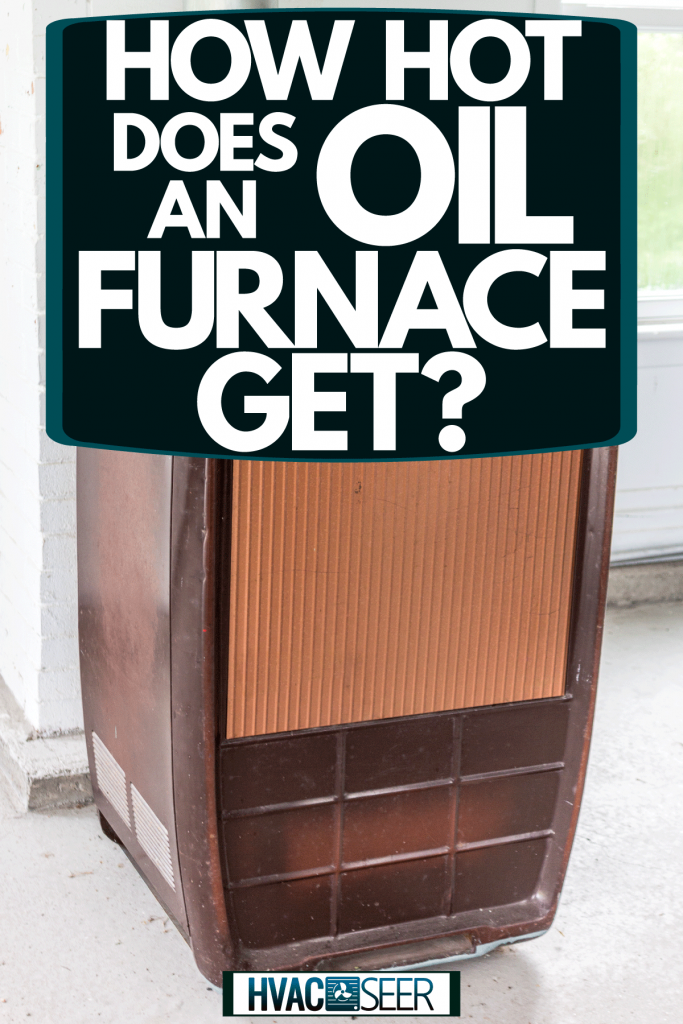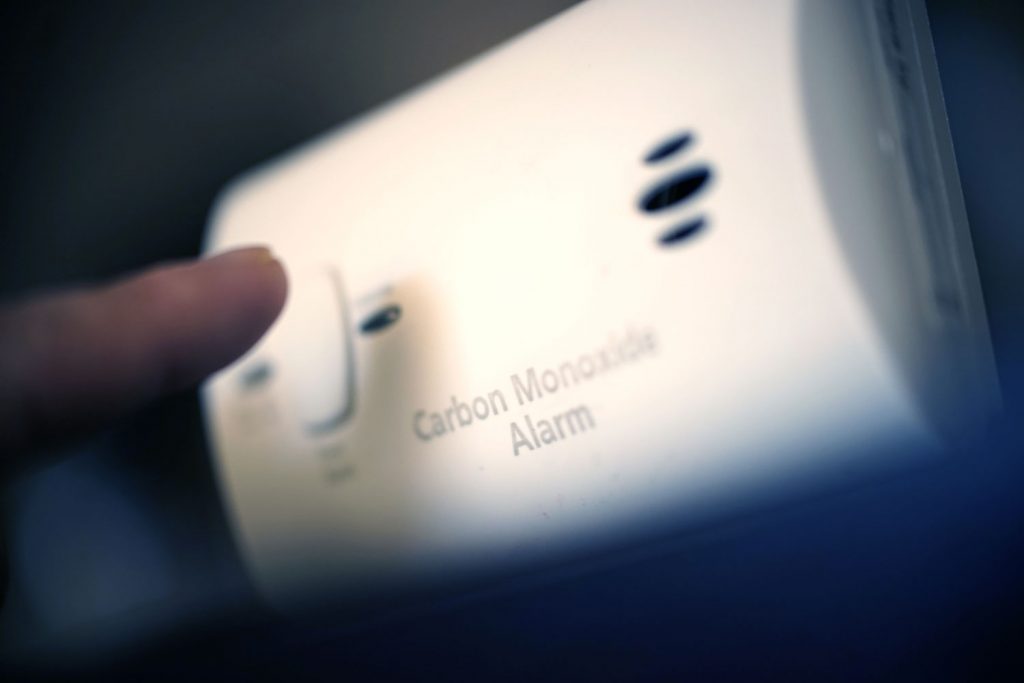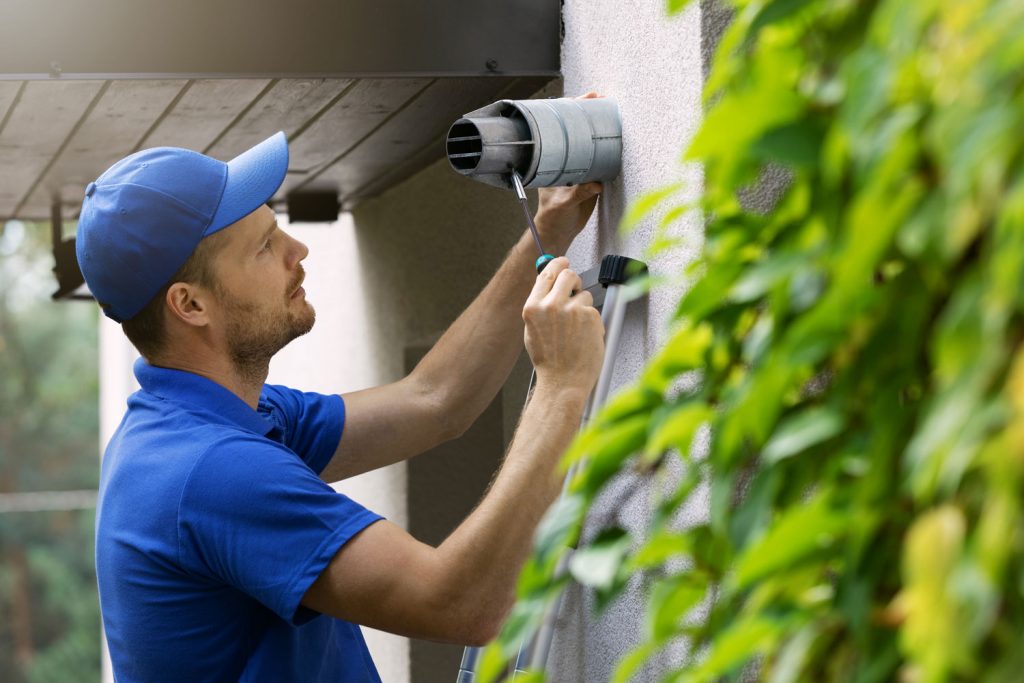If you are looking for heating for your home, you most likely are considering an oil furnace for your home. Though, it's a tricky situation to be in because you have to find out how they work. More specifically, how hot do oil furnaces get? Are they adequate for heating your home or, are they a hazard? If that's what you are wondering, let's find out.
When you're using your oil furnace, it can produce air as hot as 140-170 degrees Fahrenheit. However, as it makes its way through the ductworks, it loses significant energy. Thus, it is not as hot. On the other hand, oil furnace pipes can get extremely hot. For example, the flue pipe can get as hot as 350-700 degrees Fahrenheit.
Now that you know how much heat an oil furnace can produce, you may be wondering what it means. After all, why is there a big disparity in how hot the flue pipe can get? Depending on the temperature, it could indicate how well your oil furnace is performing. Additionally, what other concerns should you be aware of when using an oil furnace? If you'd like to find out more, keep reading ahead.

How It Works
So, how do oil furnaces work? First, it works by detecting temperature changes. If a room falls below the temperature you set, the thermostat sends a signal to start the oil furnace.
As it activates, the oil furnace pulls oil from a reserve tank. First, the oil goes through a filter. Then, it goes into a burning chamber, where it converts into a mist.
Finally, it goes through a process where the oil spray mixes with air and ignites in the combustion chamber. As you can guess, the combustion chamber begins to get extremely hot. Air comes into play by absorbing heat in the heat exchanger. For the air to reach the rooms, a blower sends the hot air into the ducts.
Eventually, as the air loses energy, it makes its way back to the heat exchanger. From here, the cycle continues. The gases this process produces are pushed away through the flue pipe. If the flue pipe is not working correctly, you could have dangerous gases building up in your home.

Are Oil Furnaces Dangerous?
So, that begs the question, how dangerous are oil furnaces? Do they present any danger at all? It comes as no surprise to say that they do! As it produces hot air to distribute to your home, the process also creates by-products. These by-products are:
- Nitrogen
- Carbon Dioxide
- Water Vapor
- Carbon Monoxide
The most dangerous by-product to you and your home is carbon monoxide. Although it is a rare case, an oil-furnace system can induce carbon monoxide poisoning. This situation is more likely to happen if you do not maintain it or it malfunctions.
Even if it is rare, you should have a carbon monoxide detector present. Additionally, you will want to have the main component in removing carbon monoxide from your home checked.

Flue Pipe
As we mentioned earlier, the flue pipe plays a crucial role in an oil furnace system. Its purpose is to remove harmful by-products from your home. Regardless of the situation, get a service technician to inspect the flue pipe for anything out of the ordinary.
In addition, you must make sure the flue pipe is clear to disperse the harmful by-products. If you fail to do so, there are some instances that you will run into.
Dirty Flue Pipes
If your furnace has a safety switch and is dealing with a dirty flue pipe, it will stop the furnace from running further for safety precautions. From here, since the exhaust has nowhere else to go, it will recirculate back into your home through the air intake.
This situation presents a danger in two ways. Financially, it can damage your furnace. The by-products are acidic. It will continue to recirculate through your furnace, making it more acidic. The acidity will build up enough to start damaging most of the equipment on your furnace.
Consequently, this situation will leave you with two crucial health concerns. If it gets too cold in your area, it can leave you without heat when you need it. Carbon monoxide poisoning is another concern as it is undetectable without a carbon monoxide detector. Thus, ensuring the flue pipe is working should be a top concern for your safety.
Can an Oil Furnace Catch Fire?
If you are wondering if an oil furnace can catch on fire, yes, it can. The main forces that can cause a fire to happen are:
- The filter is too dirty or blocked.
- The heat exchanger has a crack.
For this reason, it is essential to service your furnace regularly. In regards to heating oil, no, it most likely will not catch on fire. It needs to be heated at 140 degrees Fahrenheit and vaporized to catch on fire.
It's also essential to note that oil furnaces need enough clearance to function. Meaning, flammable objects should not be anywhere near their vicinity. These include:
- Cleaning solvents
- Gas cans
- Cloth
- Shelving
- Wood
Ideally, the oil furnace should be on a stone platform away from fans or open breezes.
How Hot Does the Furnace Exhaust Pipe Get?
It depends on several factors. If it is blocked or clogged, it can reach temperatures up to 750 degrees Fahrenheit. On the other hand, if proper maintenance is exercised, the exhaust pipe will get as hot as 350-540 degrees Fahrenheit.
How Hot Does the Furnace Flue Get?
The furnace flue pipe can get as hot as 350-700 degrees Fahrenheit. It will get too hot to touch. So, it is advisable to keep flammable objects away from them. The reason it differs so much is that the temperature indicates how well your furnace is working.
If it reaches up to 750 degrees Fahrenheit, it means that your furnace is not working efficiently. On the other hand, if it reaches as low as 300 degrees Fahrenheit, it indicates that your furnace is not producing enough heat.
You will know the oil furnace is running efficiently if the flue pipe ranges from 350-540 degrees Fahrenheit.
How Hot is the Oil Furnace Flame?
Getting a definite answer to how hot a furnace flame is a tricky topic. One source claims the optimal temperature for combustion conditions is between 2750-2850 degrees Fahrenheit. However, another source claims it can burn as hot as 3812 degrees Fahrenheit.
What Color Should the Flame Be on an Oil Furnace?
If you have experience with an oil furnace, you will notice the color. While it might not be obvious to some, the color of the fire is an indicator of how well airflow is in the area. In essence, if you see a mixture of white, chrome, and blue flames, the furnace is receiving the correct mixture of air.
Though, the manufacturer also influences the color of the fire. So, a light yellow flame might also be visible. If you want to get down to specifics, you should consult the user's manual regarding the color.
What Does a Yellow Furnace Flame Indicate?
A yellow flame is not always a good sign. Depending on how dark it is, it can be an indicator of a lack of air. As mentioned above, a light yellow flame can indicate a good flow of air. But, it depends on the brand of the oil furnace.
Does an Oil Heater Dry Out the Air?
Some users claim that an oil heater can not dry out the air. As they state, the way an oil heater warms the air does not alter the moisture content. Additionally, others explain further, claiming that the relative humidity decrease. But, the absolute humidity remains the same.
In other words, hot air can hold more water vapor. Meaning, it feels dry, but the moisture content is the same! To combat the dry feeling, some suggest leaving a container with water on the side of the room. Ideally, the water will evaporate and add humidity to the air.
How Long Can I Leave an Oil Furnace On?
Since oil furnaces turn on once the temperature drops below what you have set, they will turn on and off at various points throughout the day. It can turn on and off three to eight times an hour. However, several factors can make that number higher.
Cycling Too Often
An oversized oil furnace for your home, insulation, and outdoor temperature all play a part in how many times it turns on and off. If it cycles too many times in a short amount of time, it can indicate that something is not functioning in the system. For example, if you have an oversized oil furnace, it will not distribute warm air evenly. So, to compensate, it will continuously turn on and off, attempting to reach the temperature you have set.
In general, the US Department of Energy recommends 12,000 BTU per 400-500 square feet. But, this can change depending on the climate and the insulation of your home.
Other Sources
It could also mean your furnace is overheating. The source of overheating include restricted airflow, blocked ducts, and clogged filters. If your oil furnace is old, it could indicate that it is time to replace it. Otherwise, a malfunctioning thermostat can also be the cause. When a thermostat does not function properly, the oil furnace will not know when to stop running.
Can a Furnace Get Too Hot?
Yes, an oil furnace has the potential to get too hot. In the best case, the safety switch will activate and shut off the system. This situation will leave you without a heat source for your home. In the worst case, it can start a fire!
Overheating has two causes; a dirty air filter or problems with other parts in the system. They include:
- Blocked vents
- Clogged/dirty air filter
- Dirty or broken blower fan
- Cracks in the heat exchanger
- Damaged or dirty evaporator coils
What to Do If My Furnace is Overheating?
To fix these problems, you will have to go through a range of ideas. Of course, it depends on the part.
Heat Exchanger
If the heat exchanger has a crack, you will most likely have to get a new furnace. Cracks form from an incorrect assembly.
Dirty Furnace Parts
Filters, blower fans, and evaporator coils will need to be maintained to function. You need to replace filters every three months. It may be sooner if you have pets.
To clean the evaporator coils, you can use a vacuum cleaner along with a coil cleaner. Before putting them back to use, some recommend measuring the amps for further cleaning.
Cleaning a blower fan requires more effort. It will require disassembly. From there, you can clean the dirt between the fan blades using a toothbrush or paintbrush. Of course, you will need more cleaning depending on how dirty the blower is.
Final Takeaway
Oil furnaces are a complex system that requires a bit of understanding to run efficiently. Otherwise, you can run into a heap of problems that can shorten the lifespan of the system. We hope you found the article above insightful!
Before you go, do you have other oil furnace concerns? If you are wondering if it requires electricity, check out our post here.
Are you considering using heated floors? If you are concerned about the safety of using them, check out our post here. Until next time!

I’m in a single wide mobile home. I recently changed the tank filter, nozzle and Cadcell.
Prior to this the blower would run twice, I’m assuming the second was to expel residual heat from the plenum. Now the blower only runs once, the temp at the nearest vent is the same now as it was…Which is considered Normal?